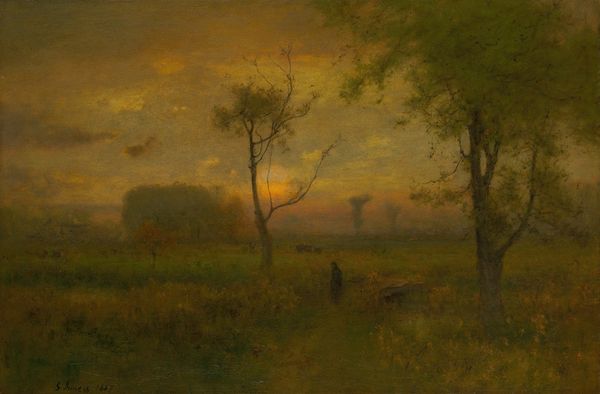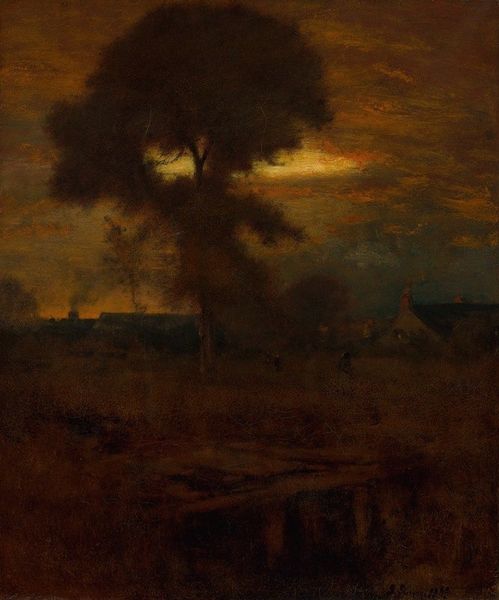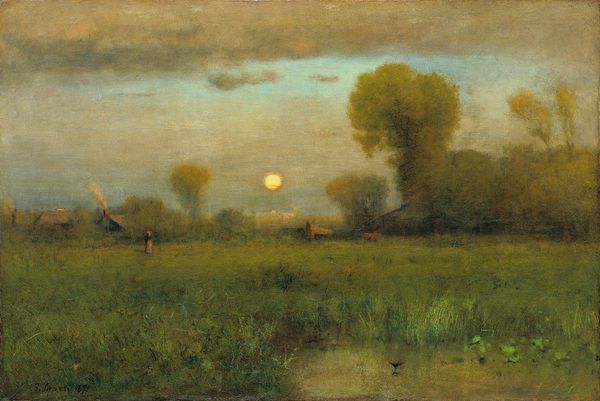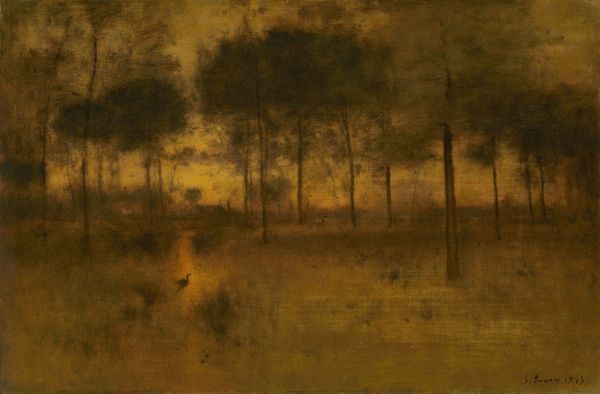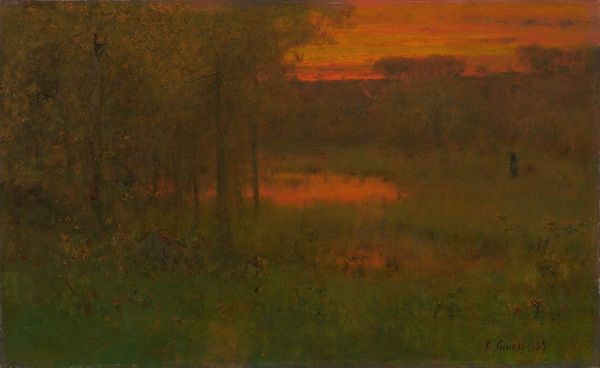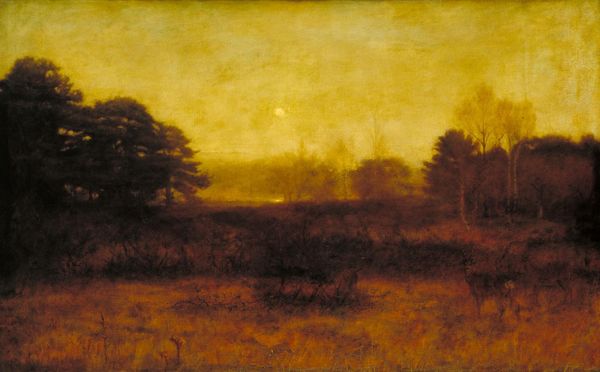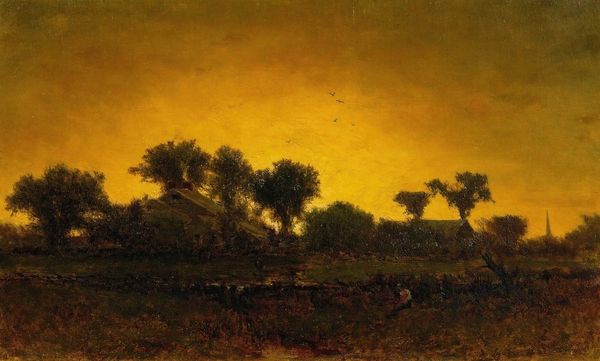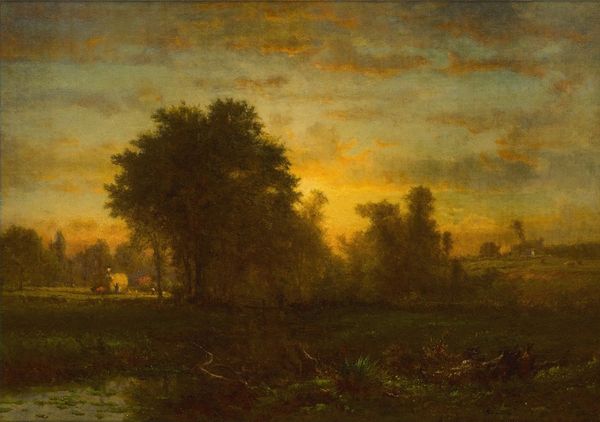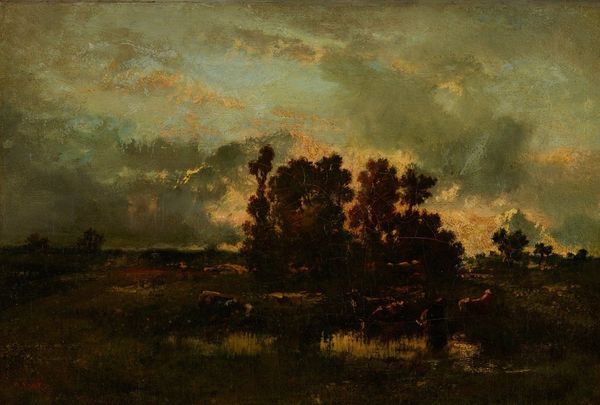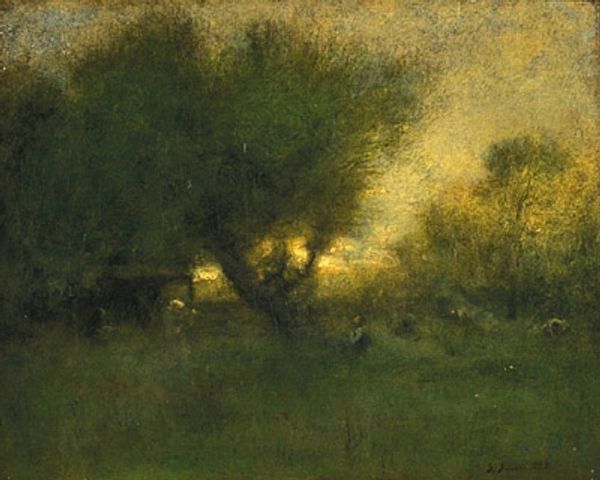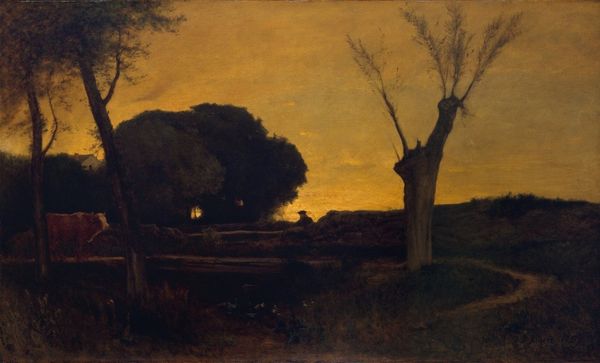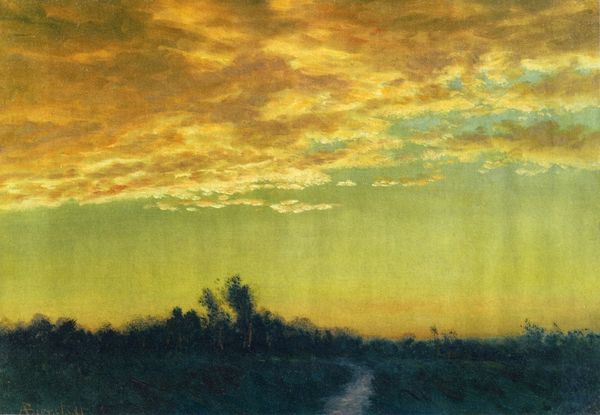
Copyright: Public Domain: Artvee
Curator: Looking at this, the oil paint laid thick across the canvas, I'm reminded of the sheer labor involved in creating "After Sundown, Montclair, New Jersey" by George Inness. The piece dates back to 1888. Editor: It evokes such a heavy, melancholic stillness. It’s almost oppressive, the way the yellow sky presses down on the obscured landscape below. Curator: Precisely. And that feeling, that weight, it's directly connected to Inness's working methods. He worked en plein air but heavily reworked his paintings later in the studio. Consider his laborious additions, glazes and scumbles - an interesting use of available resources and labor. Editor: It speaks to the social and political climate of the time as well, you know. The late 19th century was an era of intense industrialization. A view of rural landscape feels almost a commentary on what was being lost due to exploitation during that time, as people and nature got lost in the economic machine. Curator: The obscured details contribute to that loss as well, perhaps deliberately referencing the societal changes taking place. Think about the pigments themselves - their sources, the means of production and their commercial appeal at that time. That intense golden yellow, for instance - how did it affect production within the artistic sphere at that time? Editor: Absolutely. It also draws me to explore Inness' own context. We need to question the romanticizing narrative often attached to landscape painting. He was a vocal supporter of the Greenback Party, critiquing financial institutions and land monopolies and portraying the realities of class and property through these landscapes. Curator: His deliberate mark-making, combined with this philosophical perspective provides viewers insight into production processes that were both artistic and economic. Editor: It makes you think beyond aesthetics, engaging with what was happening in society, which encourages critical thinking and reveals a social commentary we don't always associate with impressionistic landscapes. Curator: Yes. Ultimately, a fascinating blend of meticulous craft, commentary, and emotion materialized into a visually striking oil painting. Editor: And for me, seeing it as something actively challenging societal ideals of progress gives the art historical canon something more layered to work with, enriching our discussions around this period of painting.
Comments
No comments
Be the first to comment and join the conversation on the ultimate creative platform.
